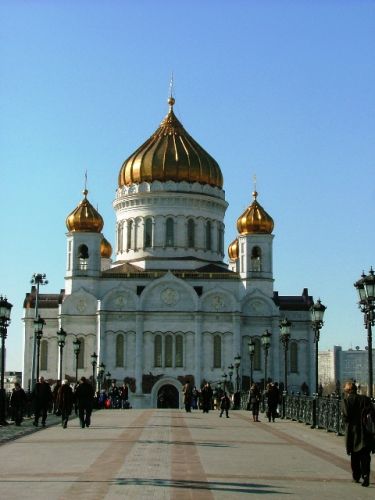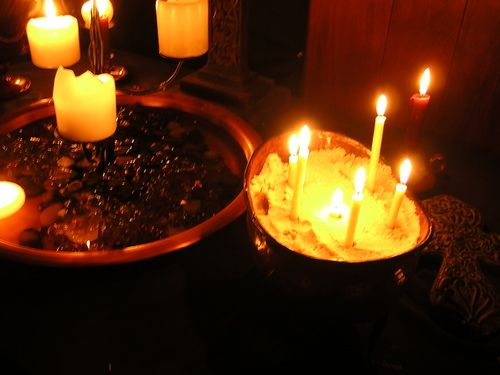
The service was held in full accordance with Orthodox Christian tradition in the Christ the Savior Cathedral, whose reconstruction Mr. Yeltsin approved while he was president after it was destroyed during the Communist era.
During the service, Mr. Yeltsin's open casket lay beneath the cathedral's massive frescoed dome and was draped with the Russia tricolor. Clergy intoned prayers over the body, as a teary-eyed Naina I. Yeltsin, Mr. Yeltsin's widow, and his two daughters, dressed in black, looked on.
... Not since the death of Czar Aleksandr III in 1894 has the Christ the Savior Cathedral officially been used for the funeral of a Russian head of state.
This was such a symbolic national moment, but please do not think that many Orthodox believers – inside and outside of Russia – were tempted to overestimate its importance. The moment was poignant, but in no way perfect. "Civil religion" is real, but it's rarely the real thing when it comes to faith.
This is not to judge Yeltsin, whose career is framed by courage as well as by corruption. And how are we to know the mysteries in the minds, hearts and souls of President Vladimir V. Putin and the other dignitaries who – with varying degrees of success, if you study the photos – seemed to make the sign of the cross again and again while attending the funeral rites?
But I have a very strong memory from 1991 that, I think, provides a bit of context for these images. Through a strange series of events linked to that year's Moscow Book Fair, I was part of a group that arrived in a hotel across the street from Yeltsin's headquarters only days after his triumph and the fall of the Soviet Union. In fact, I was in the crush on the steps of the Russian White House at his victory party, with 100,000 or so other people. It was a stunning time, which led a friend of mine to look at the scene and say, "Don't you feel like you're back stage at the changing of the world?" (If you wish, click here and see my Scripps Howard columns from that era.)
It was amazing. However, let me stress that it was at that time – even as the bells rang and the world seemed to tremble – that a candid Orthodox priest told me about an interesting and sobering Russian expression that I think helps put the Yeltsin funeral in context.
The term is "podsvechnik," which means "candlestick holder."
However, the Russians also use this term to describe leaders who understand the power of the liturgical photo opportunity, the politician who knows how to venerate an icon, make the sign of the cross and then stand still holding a candle during some or all of an Orthodox rite, while the cameras click.
 This is the cynical side of what we witnessed today.
This is the cynical side of what we witnessed today.
But this brave priest emphasized that it is not the whole story, for those who are patient and are willing to cling to hope. It is possible to see signs of faith, as well as cynicism. It helps to remember the context for this era of confusion and mixed signals. This is how I put it a few years ago:
Outsiders must remember that this is taking place only a few generations after the Communists closed 98 percent of Russia's churches and, in one brief period, killed 200,000 bishops, priests and nuns and then sent another 500,000 believers to die in labor camps. Millions later died in Stalinist purges. KGB records indicate that most clergy were simply shot or hanged. But others were crucified on church doors, slaughtered on their altars or stripped naked, doused with water and left outdoors in winter.
Now, once again, we see Russian bishops burning incense in a state funeral. It's a great photo. However, I hope some journalists who covered the rites hang around to ask this hard question: Were some of the bishops in these photos mere "candlestick holders"? There is no easy answer, but the safest is "some were and some were not."
Why? As Yeltsin came to power in 1991, that anonymous priest in Moscow told me that it was crucial to understand that the post-Soviet Russian church will contain four kinds of leaders:
A few Soviet-era bishops are not even Christian believers. Some are flawed believers who were lured into compromise by the KGB, but have never publicly confessed this. Some are believers who cooperated with the KGB, but have repented to groups of priests or believers. Finally, some never had to compromise.
"We have all four kinds," this priest said. "That is our reality. We must live with it until God heals our church."
That's what I was thinking about today, as I read the reports from Christ the Savior Cathedral. I hope there are journalists who linger to explore this confusing, joyful, painful, inspiring, sobering story. It would be worth the effort.
